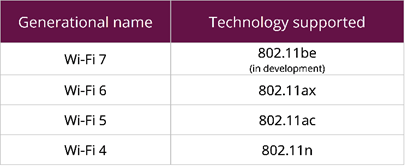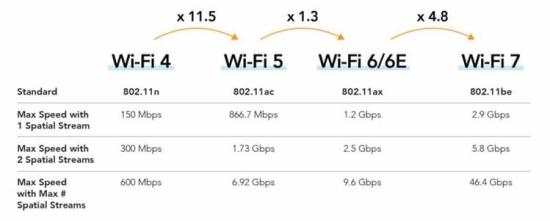Ultra-Low Latency, very large bandwidth, connection of a large number of peripheral devices, service guarantees, security, etc... some truly promising advantages. So, how do we position ourselves today and what advantages can your business yield from these new technologies? Sirris and Agoria wish to offer a few answers that may enlighten you on the evolutions of these telecommunications-related standards.
The 4G network is approaching overload, the service quality you expect is no longer provided, your Wi-Fi cover has never been quite perfect, and you are paying the price… And wondering what you can do to improve things, and fast.
5G vs. Wi-Fi
So, let’s start by comparing 5G technology with Wi-Fi. Although they do not rely on the same standards, or even pertain to the same usage, they nevertheless satisfy the same need to access the Internet via a top-quality service.
5G will shortly be deployed large scale throughout Belgium. A few pilot sites already exist: in the Port of Antwerp, on the A6K site in Charleroi and, more recently, at the La Grand Poste centre in Liège. And even if all they offer today is improved bandwidth, forthcoming 3GPP releases promise to yield a host of other useful functionalities:
- Ultra-Low Latency: a network capable of transmitting data packets in 1 ms (1,000th of a second). This enables access to data almost in real time, for augmented or virtual reality applications for example, even if - for the purposes of information - the human brain reacts within only 200 to 250 ms. Yet, this feature can prove essential in industrial applications for which real time is crucial.
- Very high bandwidth: bandwidth is multiplied by 20 compared to 4G, to reach 20 gigabits/second, i.e. a theoretical throughput of 2.5 GB per second.
- Network slicing: 5G network slicing is a network architecture that enables the multiplexing of virtual and independent logical networks on the same physical network infrastructure. For example, this enables bandwidth priorities to be set, or guaranteed latency on certain logical networks.
- Security: improved data encryption from the very first exchange, hence reinforced security compared to previous technologies.
- Private network deployment: 5G offers the possibility to build totally privatised networks that are isolated from the public network.
- Massive IoT: 5G networks enable the connection of up to 100 times more devices than 4G networks. Even if the antenna network requires increased density, more peripheral devices, in particular IoT peripherals, can be connected to it.
5G frequency auctions came to a close late July 2022. They were acquired by Proximus, Telenet, Orange, NRB and CityMesh, for a total sum of 1.4 billion Euros. Activation will only be made possible after the ultimate signatures at regional level.
Furthermore, since its launch back in the 1990s, Wi-Fi, governed by IEEE 802.11 standards, has constantly been improved to augment its throughput performance. Barely was it launched in 2019, when Wi-Fi 6 was supplanted by Wi-Fi 6E a few months later, the latter soon to be, in turn, replaced by Wi-Fi 7, we are told.
As for performance, a small graph can often prove far more convincing than a long explanation:
With increased speed performance and reduced latency thanks to MLO (Multi-Link Operation), the question of whether we should choose 5G or Wi-Fi is increasingly linked to our business model and to a lesser extent to a purely technological option.
A matter of choice
As a business, choosing between these two technologies will therefore more often be dictated by the type of infrastructure to be covered (indoor-outdoor), the number of objects to connect, their possible movements inside or outside the covered enclosure, together with the type of information transferred (high throughput, low latency, encrypted, etc.).
To all of the above, we need to add the economical aspect associated with ROI. Assessing this payback time, given the multiplicity of industrial settings, will likely require expert intervention to determine your infrastructure dimension and to compare these technologies when applied to your own business case.
As we can see, the choice can prove a real quandary, but the good news is that there are technologies to enlighten you on the majority of these issues and to offer alternatives that allow each stakeholder (SME, LE) to find its own perfect broadband fit.








